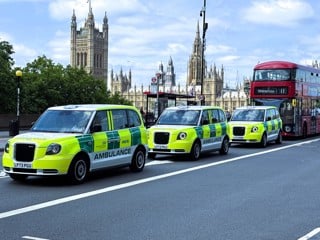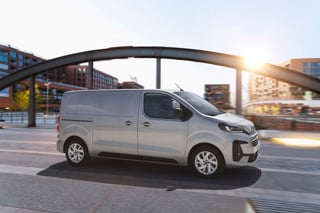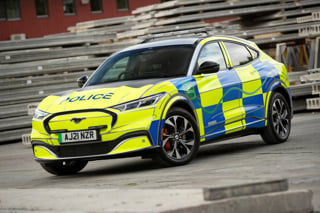Iveco and Cartwright have launched a new accident & emergency (A&E) ambulance, which is being made available for trials with NHS Ambulance Trusts and private ambulance operators across the UK and Ireland.
The body has been designed and developed within Cartwright’s 38-acre manufacturing site in Altrincham, Cheshire, using materials proven in aerospace and motorsport environments. Cartwright says the body is unique in the marketplace for being easily transferable onto a second chassis, of any make, during a projected 15 year minimum service life.
The launch vehicle is based on an Iveco Daily 50C17 chassis, which is popular with blue light operators throughout Europe. Key features include its truck-style chassis frame which guarantees structural rigidity, fatigue resistance and long-term durability, combined with an impressive turning circle and a chassis offering maximum bodybuilding flexibility.
Wes Linton, Blue Light Development Engineer at Cartwright Group, said: “We’ve invested significant resources into advancing the construction techniques and materials used in ambulance body design.”
Martin Flach, Product Director at Iveco, explained: “From an early stage we knew Cartwright was working on something very special and we were keen to support them. Selecting the Daily chassis for the launch highlights its suitability for ambulance operations; it’s also a model many blue light fleets already operate.”
The bodywork comprises a unique combination of high strength fibre-reinforced plastic (FRP) laminates, high density structural foam core, special plastics manufactured by VEKA and high strength aluminium extrusions. The FRP laminate offers 90 per cent of the tensile strength of carbon fibre but at a cost acceptable within price driven arenas. Body joints are fully bonded; avoiding the localised stress raisers of welded, bolted or rivet joints by spreading the joint surface over the full contact area.
Key to the body’s modular nature is Cartwright’s decision to mount the lightweight body structure onto a reinforced substructure to provide a strong, rigid mounting point for battery lockers, step wells, steps and tail-lift. Unlike existing ambulance bodies in the UK, this allows fleets the option to remount the body onto a different chassis and wheelbase in the future – ensuring the base vehicle can be replaced after approximately seven or eight years in service, in line with current industry standards.
The cab of the Daily is mounted with a new aerodynamic kit developed by Cartwright, combining a cab air deflector with aerodynamic wings to push air over the light bar and around the body sides. This helps to maximise fuel efficiency during the periods of hard acceleration common with A&E ambulances, whilst adding minimal weight to the vehicle.
Linton added: “Ambulance electrical systems are worked extremely hard with constant parasitic communications loads combined with regular high current requirements for the tail-lift. For this new body, we have developed what we are confident is the most advanced electrical system of its type in the blue-light sector.”
The demonstrator model is powered by a 3.0 litre FPT Industrial diesel engine which is capable of producing up to 170 hp between 3,000 and 3,500 rev/min, combined with a maximum output of 400 Nm of torque between 1,250 and 2,600 rev/min. This ensures sufficient power to meet the rapid response times demanded in the blue light sector.





















Login to comment
Comments
No comments have been made yet.